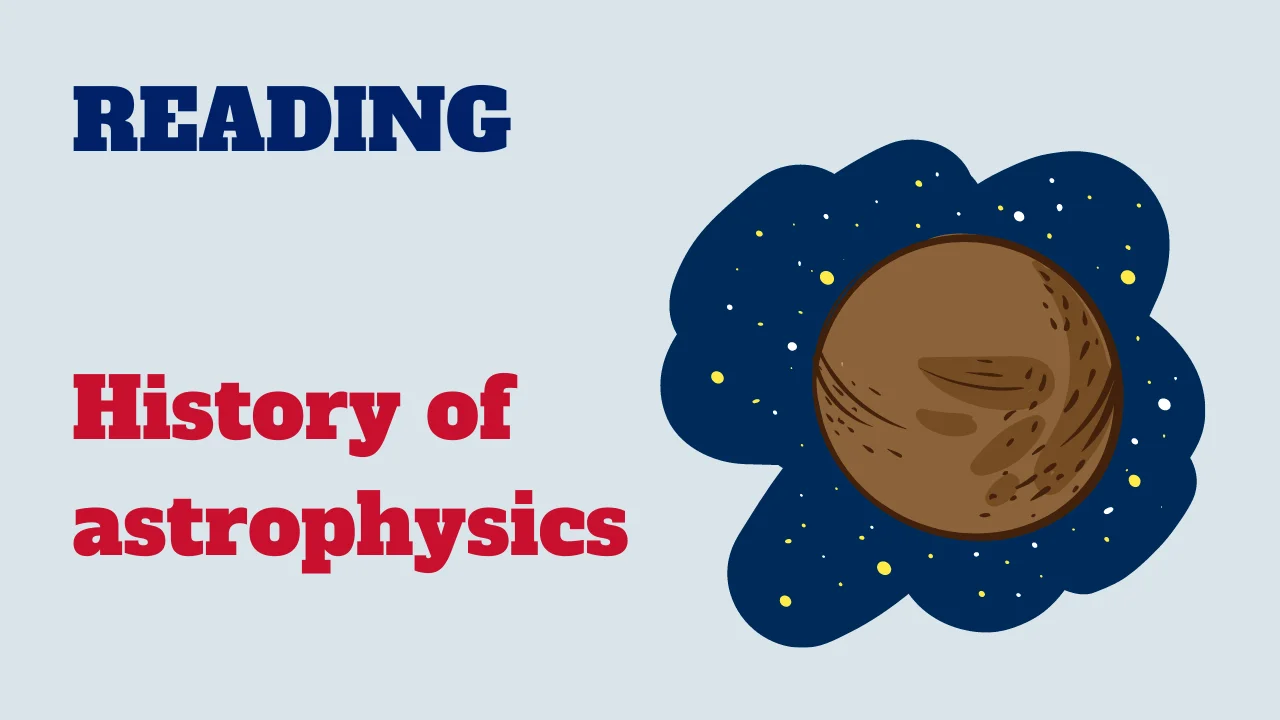Welcome again dear readers. This is a reading activity on the captivating history of astrophysics, a field that unravels the mysteries of the cosmos and sheds light on the nature of celestial bodies.

In this reading activity, we’ll delve into the evolution of astrophysics from ancient times to the cutting-edge research of the 21st century.
Text: History of astrophysics
The history of astrophysics is a fascinating journey through humanity’s quest to understand the universe. It blends the ancient art of astronomy with the principles of physics to explore celestial phenomena. Astrophysics, as a formal discipline, emerged in the late 19th and early 20th centuries, but its roots stretch back millennia.
Early civilizations, including the Babylonians, Greeks, and Chinese, meticulously observed the skies, creating early models of the cosmos. These ancient astronomers, such as Ptolemy, developed geocentric models that placed Earth at the center of the universe. The heliocentric model proposed by Copernicus in the 16th century marked a significant shift, suggesting that the planets orbit the Sun.
The 17th century ushered in the age of modern astronomy, with Johannes Kepler’s laws of planetary motion and Galileo Galilei’s telescopic discoveries providing new insights into the cosmos. Isaac Newton’s formulation of the laws of motion and universal gravitation in the late 17th century laid the groundwork for understanding celestial mechanics.
The 19th century saw significant advancements with the advent of spectroscopy. Scientists like Joseph von Fraunhofer and Gustav Kirchhoff used spectral lines to identify the chemical composition of stars, bridging the gap between astronomy and physics. This period also witnessed the development of the field of thermodynamics, which, along with the understanding of light as an electromagnetic wave, paved the way for the study of stellar processes.
In the early 20th century, Albert Einstein’s theory of general relativity revolutionized our understanding of gravity and the structure of the universe. Edwin Hubble’s discovery of the expanding universe in the 1920s provided crucial evidence for the Big Bang theory, further transforming cosmology.
Astrophysics continued to advance with the development of space-based telescopes, such as the Hubble Space Telescope, launched in 1990. These instruments allowed for unprecedented observations of distant galaxies, black holes, and other celestial phenomena. The late 20th and early 21st centuries saw the rise of new fields within astrophysics, including astroparticle physics and exoplanet research.
Today, astrophysics is a dynamic and rapidly evolving field, addressing fundamental questions about the origin, structure, and fate of the universe. From studying cosmic microwave background radiation to searching for extraterrestrial life, astrophysics continues to expand our understanding of the cosmos, driven by technological advancements and theoretical breakthroughs.
Comprehension questions
Congratulations on exploring the rich history of astrophysics! From ancient cosmologies to modern-day discoveries, astrophysics continues to inspire wonder and curiosity about the universe. As our understanding of the cosmos deepens, let’s continue to marvel at the beauty and complexity of the cosmos.



